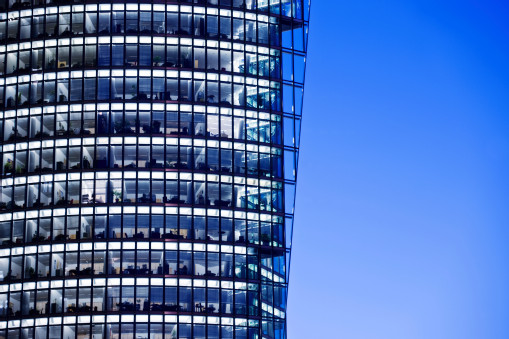Most facility managers today are using building management systems (BMS), also known as building automation control systems (BACS), to control and monitor some of their buildings’ mechanical and electrical equipment such as heating, ventilation, air conditioning (HVAC), and safety and security systems. However, the lighting system has remained separate from the BMS for some buildings, which is viewed as an opportunity loss for lighting technology providers. Osram, for example, considers that further optimization of energy usage and operations through lighting system and BMS integration could be significant.

(Image: Osram)
Integrating a smart lighting system with a BMS can up the ante significantly, particularly when the lighting system includes fixture-integrated sensors. Sensors embedded in the fixtures provide data at a granular level about the space and how it is being used. And this sensing data can be leveraged by other non-lighting functional systems within the BMS. In addition to leveraging the data to deliver maximum energy efficiency across HVAC and/or security and safety systems, this data can enable organizations to more accurately understand how their offices are being occupied and used, which in turn will help them better manage and optimize the space.
A centrally managed smart lighting system addresses the visual needs of the space by enabling the right amount of light at the right time based on occupancy, daylight level, and other conditions. Smart control strategies including daylight harvesting, personal control, occupancy sensing, time scheduling, and task tuning offer a comprehensive approach to improving energy efficiency. When these control strategies are used in combination with each other, maximum energy savings is attainable.
Buildings are reported to account for almost 40 percent of all carbon emissions. Smart lighting systems are enabling dramatic reductions in energy efficiencies and the data collected can be used to help substantiate green building certification programs.
By combining smart lighting system and building management, Osram and its customers have met requirements of LEED, the WELL Building Standard, BREEAM and The Canada Green Building Council (CaGBC) Zero Carbon Building Standard. In addition to maximizing energy efficiencies, green buildings have benefits such as higher productivity and increased occupant health. And achieving these standards can help attract talent and build brand awareness for an organization.












